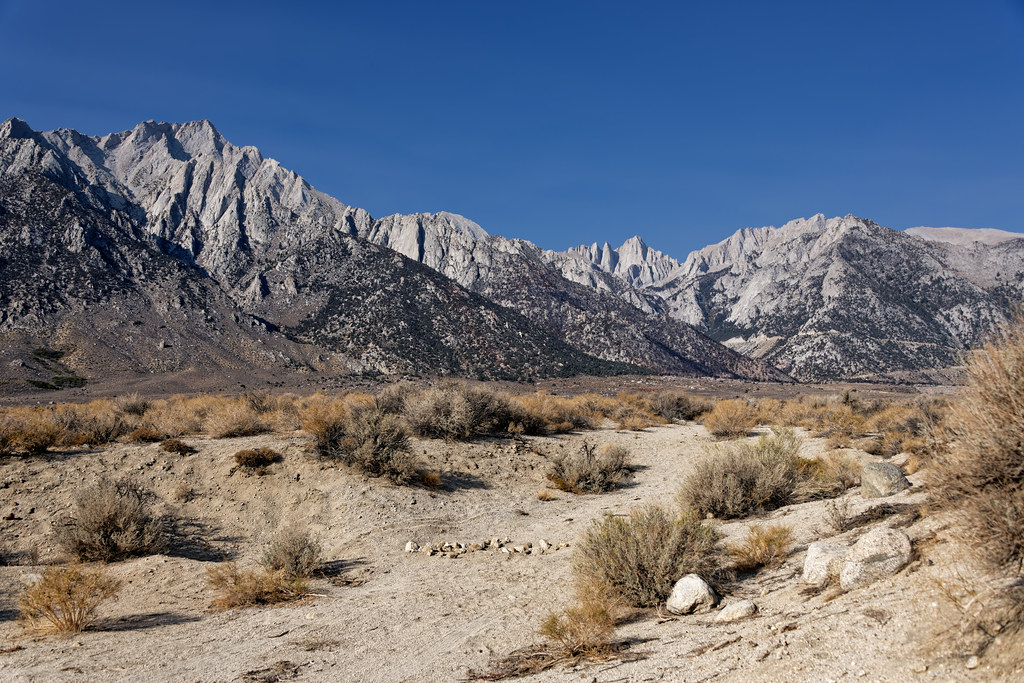#hill erosion
Explore tagged Tumblr posts
Text

Esmer-Alda
Acrylic paint on canvas (Click here for lore)
The Remnants of Atma’Zae: The New and Once-Great Settlements of The World, After the Nemesis. Art Entry # 3 of the series.
Click here for Entry # 1: God's Port and Entry # 2: Ruins of Qraeto
#art on tumblr#art#painting#paint#acrylic painting#acrylic on canvas#fantasy city#splash background#fantasy art#fantasy realm#painting and lore series#surreal#surreal art#city on the edge#experimental series#experimental art#post apocalyptic#city on a hill#glacial erosion#holy city#brushes over pour paint#i'll see everybody mid-weekish
33 notes
·
View notes
Photo
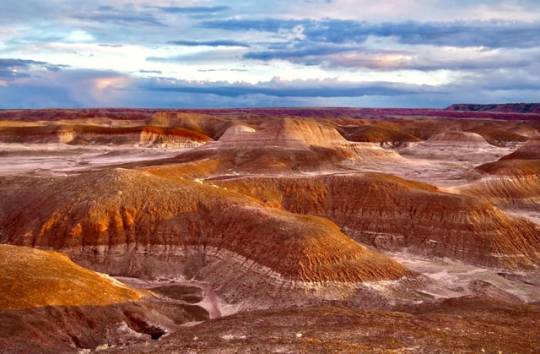
This striking image captures the rolling, textured landscape of the Petrified Forest National Park at sunset. The play of warm sunlight on the ancient, erosion-sculpted hills creates a tapestry of orange and brown hues against a dramatic sky filled with shades of blue and grey, underscoring the park's rugged beauty. Credit: /u/AffectionateYear8431
#Petrified Forest National Park#sunset#landscape#nature#ancient#erosion#hills#tapestry#orange hues#brown hues#dramatic sky#blue sky#grey sky#rugged beauty#travel#geology#national parks#desert#natural wonders#sunlight#outdoor photography#adventure#terrain#scenic
32 notes
·
View notes
Text

union,
Alabama Hills, west of Lone Pine, California.
#california#landscape#original photography#desert#color photography#photographers on tumblr#formations#geology#erosion#alabama hills#movie site#frank foster
58 notes
·
View notes
Text
How Clearcuts Cause Soil Erosion
Originally posted on my website at https://rebeccalexa.com/how-clearcuts-cause-soil-erosion/
I live within sight of the Willapa Hills. This mountain range, a contemporary of the Oregon Coast Range, stretches from the north bank of the Columbia River to the Olympic Mountains. As these are very old mountains–they began forming about 60 million years ago–they aren’t as tall and impressive as the Cascades. But they’re still a gorgeous sight, especially when snow falls at a low enough elevation to dust the gentle peaks.
They’re also one of the most heavily denuded mountain ranges on the west coast. All but a few small patches are in private hands and have been clearcut at least once. Old logging towns dot the area; as logging companies like Weyerhauser have sent timber overseas to be processed, most sawmills in the U.S. have closed down in recent decades. While the northern spotted owl (Strix occidentalis caurina) became the scapegoat in the 1990s, more jobs have been lost due to corporate decisions like these than to the protection of the last scraps of old-growth forest.

Driving across the Astoria-Megler bridge from Oregon, the beauty of the Columbia River Estuary is marred by bare, scarred hillsides everywhere you look on the Washington side. And the damage just continues as you head north up 101, which offers close-up views of land torn apart once again by recent clearcuts.
The main concern most people have with regards to clearcuts is the loss of the trees; after all, those are the most obvious component of the forest. But the damage goes much deeper. Entire ecosystems are bulldozed to bare dirt to make it easier for heavy machinery to gather the trees; killing numerous living beings and severely compacting the soil.
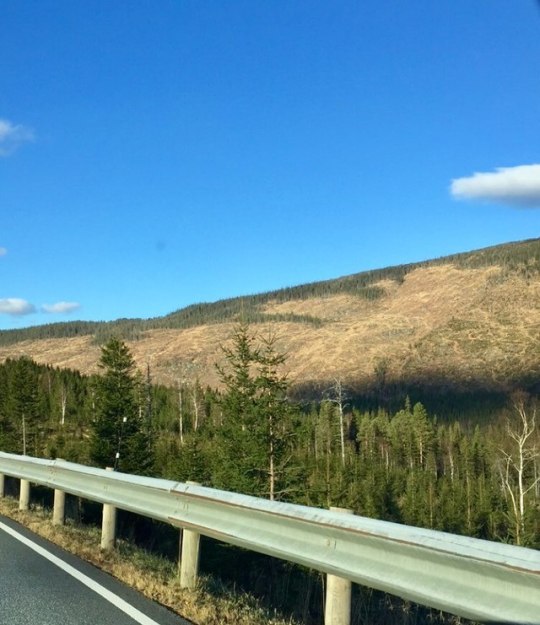
That soil is then left defenseless, shorn of its rich, protective layers of vegetation and duff. The Willapa Hills can get upwards of 100 inches of precipitation a year, almost all of it as rain. Climate change has led to more severe weather that dumps larger amounts of rain in short periods of time.
A healthy, mature forest can mitigate some of the effects of these downpours as vegetation slows the velocity of raindrops, and the complex, layered soil with its cover of duff absorbs the water. A clearcut lacks these protections, which means every time it rains, tons of topsoil wash off the bare hills. It takes decades for trees and other vegetation to return to a point where they can effectively protect the soil, but by that point an incredible amount of valuable soil has been lost permanently, and will take many centuries to build back up–assuming the land isn’t just clearcut again when the trees are a few decades old.
This, of course, is terrible for the local ecosystem. Any plants and fungi that return to that area are going to be dealing with badly depleted soil with fewer nutrients and a diminished soil microbiome. On a much wider scale, soil is an incredibly important carbon sink, and clearcuts severely reduce the soil’s ability to hold carbon. This is in addition to all the carbon released and produced through the act of clearcutting in the first place.
But it’s not just the land affected by soil erosion. All that soil flows into streams and other waterways. Normally the streams that cascade down the Willapa Hills have rocky beds, full of gravel deposits used by salmon to lay their eggs, and offering shelter to a variety of other aquatic life. When soil washes down into the stream, some of it settles into the gravel, smothering it and anything living in it, to include salmon eggs. This directly leads to a significant decline in salmon and other aquatic wildlife populations. Some streams have been so badly damaged that their longtime salmon runs have gone extinct.

Clearcut forests are the most obvious source of soil erosion, but the same problems happen anywhere the soil is laid bare. Millions of acres of prairie have been destroyed in the past couple of centuries to create farmland in the Midwest; grassland soils are even better carbon sinks than those in forests. And while lawns may have a rudimentary covering of one species of grass (and perhaps a few weeds in the absence of spraying), the soil underneath is usually quite unhealthy and not sequestering carbon the way a natural grassland would. (Lawns, by the way, cover over 63,000 square miles of the United States and are the country’s largest cultivated crop.)
So what can we do about all this? We can start by putting public pressure on logging companies and other entities involved in destroying intact native ecosystems like forests and grasslands. While we do still need timber, there are more sustainable alternatives to clearcutting that are also more carbon-friendly.
It’s also important to protect what native ecosystems remain, especially those that are relatively undamaged by development, invasive species, and other deleterious factors. And habitat restoration, even on a small scale, can make a big difference both locally and as part of a wider network of restoration projects in backyards and on balconies.
Finally, keep sharing news stories and other information about soil erosion and solutions. The more people know about this important ecological topic, the better decisions we can all make both as individuals and as part of a society.
Did you enjoy this post? Consider taking one of my online foraging and natural history classes or hiring me for a guided nature tour, checking out my other articles, or picking up a paperback or ebook I’ve written! You can even buy me a coffee here!
#forests#old growth forests#trees#clearcutting#nature#wildlife#salmon#Washington#Willapa Hills#Pacific Northwest#PNW#environment#environmentalism#conservation#habitat restoration#endangered species#ecology#erosion#soil#logging
53 notes
·
View notes
Text
If anyone wants examples of what NOT to do during a weather emergency, go watch misha's newest videos
#i love misha but jesus#from approaching downed powerlines#to running on a closed road#THAT IS CLOSED BECAUSE IT IS IN DANGER OF COLLAPSING FROM THE RIVER EROSION BELOW IT#and not just b/c of the mudslides or rocks from the hill above the road#that was the dumbest thing i've seen him do#which includes using a table saw over his legs or whatever the hell#how he's not dead by now idk#misha#misha collins
8 notes
·
View notes
Video
Good Morning, Mount Whitney by Mark Stevens Via Flickr: While taking in view around the Face of the Alabama Hills with a view looking to the west across a desert landscape and then hillside of eroded rock formations. This is in the Alabama Hills National Scenic Area. The backdrop of mountains is part of the Mount Whitney Group range of the Sierra Nevada mountains. Lone Pine Peak is probably the most recognizable one in the image middle, just left of center. Mount Whitney is middle, right of center and appears more distant.
#Alabama Hills#Alabama Hills National Scenic Area#Azimuth 263#Blue Skies#California and Oregon Road Trip#Candlelight Peak#Canvas#Day 2#Desert#Desert Landscape#Desert Mountain Landscape#Desert Plant Life#DxO PhotoLab 5 Edited#Erosion#Hillsides#Inyo National Forest#Landscape#Landscape - Scenery#Lone Pine Peak#Looking West#Mount Carillon#Mount Whitney#Mount Whitney Group#Mountain Peak#Mountains#Mountains in Distance#Mountains off in Distance#Mountainside#Nature#Nikon D850
2 notes
·
View notes
Text
Best Landscape Photography January 2024
Embarking on January’s photographic journey, I found myself weaving through the muted tapestry of winter, from the rolling South Downs to the rugged coastlines of East Sussex. This month was a testament to the quiet majesty of dawn and the raw beauty of the natural world in its most introspective season. Each frame captured tells a story of early morning stillness, the challenge of capturing…

View On WordPress
#church#cliff#cliff edge#clouds#coast#cottages#countryside#dawn#dusk#erosion#evening#grazing#hamlet#high tide#hills#lighthouse#long exposure#low tide#moon#morning#pier#road#sea stack#seascape#sheep#stream#sunrise#sunset#tower#tower block
0 notes
Note
YOU. You are correct about Cloud Strife. Everything you say about him is CORRECT
Hi I'm going to use your ask as an opportunity to go on an unhinged tangent about him below the cut.
I believe that EVERYTHING about Cloud Strife as a character makes total sense once you realize: it's autism.
Here's a character whose entire arc revolves around the erosion of his identity and his desperate attempts to adhere to an ideal image, at the expense of his own wellbeing; and how self acceptance is the thing that brings him back from the edge of despair.
Youtube theorycrafters waste hours of their lives trying to piece together Cloud's psyche, when the answer is just... autism. It really is that simple. I will die on this goddamn hill.
In Trace of Two Pasts, we learn that even as a toddler, Cloud really was just... like that. Unemotive and awkward. And the entire lifestream sequence in the OG shows us a young Cloud who behaves in baffling ways. Tifa and her friends invited Cloud into their group, but he rejected their friendship while simultaneously harboring a seething jealousy. How the heck does that work, huh?
Viewing this through the Autism Lens™️, his approach make way more sense. Fearing his own inability to read and reciprocate their intentions, he pushes them away, and the resulting loneliness crushes him. He mistakes that loneliness for anger. He turns that anger outwards and gets into fights. Because the other kids don't understand him, Cloud sees them as stupid and immature. It's the perfect recipe for disastrous distrust. The tragic result is that, when Tifa gets into her accident, Cloud is immediately blamed by kids AND adults. He's seen as inherently dangerous and unpredictable, even though he did nothing wrong. It's like they were already looking for the perfect excuse to hate him.
The worst part is, because he struggles to articulate his own thoughts and feelings, he starts to just... accept what other people say about him. He's a pain in the ass. He's a selfish brat. He could try being a bit nicer. Any attempt that he makes to argue, backfires and proves their points even more. He's being childish. He needs to get his shit together. Nothing's ever good enough for him. He stops fighting it and lets people drag him around and violate his boundaries, because no matter how loud he yells or how intelligently he argues, nothing he says ever reaches their ears. He trims away more and more of himself to try and appease others and nurse the constant emotional pain. (And that's not even addressing the entire traumatic *waves hands* everything that he's gone through by the time he reaches Midgar! That would have to be its own tangent lol.)
It's hard to watch as a player; the secondhand embarrassment of Cloud's social blunders is immense. Some people don't like Cloud as a video game protagonist, which is perfectly valid. But a lot of times, they justify their opinion by perpetuating the same damaging language. He's an asshole, he's a weirdo, he hates people. The irony would be hilarious if it wasn't so frustrating. I know Cloud is just a fictional character, he doesn't need to be defended from harsh criticisms. But I can't help but wonder what these players think about the "weird people-hating assholes" that they meet in real life.
It also makes me wonder if they were even paying attention. I think the games make it pretty damn obvious what's going on. He's an asshole because other characters treat him like one before they even get to know him. He hates people because he doesn't understand them, and they don't even try to understand him. He's a weirdo because he has a strange way of showing how deeply he loves and cares, and he's afraid that his love will be misinterpreted like every other emotion he's ever dared to show.
The autism is everywhere. It permeates his entire being. It's in his silly responses when he takes things too literally. It's in his painfully practical way with words. It's in the stiff expressionless look and the flat tone of voice. It's in him constantly adjusting his gloves, shifting his weight, looking down at his feet. It's in his questionable idea of what you're supposed to do with your body at a yoga session. It's in the half a dozen flustered high fives, it's in the motion sickness. It's in the contagious eagerness with his special interests in SOLDIER and materia and chocobos.
It's in the moments where the facade crumbles and we get to see the real Cloud, the one that Aerith knew was in there— the one that Tifa finds in the lifestream— the one that Zack gave his life for— the Cloud that cherishes the whole world. He's got so much of everything inside of his heart, and he doesn't know how to get it out. You'd be a weird asshole about it, too.
#ok it's mostly coherent. good enough#good morning. lol#cloud 'you owe me a pizza' strife#cloud 'doesn't go into the twenties' strife#cloud 'i prefer funtion over form' strife#this is definitely a character analysis and NOT a self introspection session. do not peel back the layers. nothing to see here folks#ffvii#cloud strife#asks
276 notes
·
View notes
Text
i learned what are the most mysterious places in the world
Marree Man – The fact that there is not a single witness to the creation of the Marree Man speaks to the absolute isolation of central South Australia. Somehow in 1998, one person or a group of people were able to create a 2.6-mile long line drawing of an aboriginal hunter, without being seen. In the midst of barren, arid land in South Australia, the Marree Man is the largest geoglyph and work of art in the world. Cut into the harsh landscape with lines over 115 feet wide and one foot deep, the towering Marree Man is easily visible from space. Thirteen years after the Marree Man was discovered during a flyover, little is known about its origin. Although we may never know the true origin of the Marree Man, it is certainly one of most intriguing modern day mysteries.
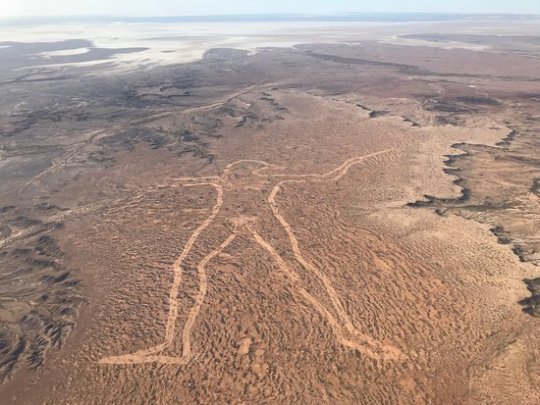
Chocolate Hills – Bohol Island in the Philippines during the dry season, you might notice what looks like thousands of chocolate kisses protruding from the terrain. These mysterious conical mounds are known as the Chocolate Hills. There are approximately 1,268 individual hills, their heights ranging from 100 to 160 feet, though the highest is almost 400 feet high. The hills, which are almost all symmetrical, consist of grass-covered limestone and turn brown during the dry season. Despite the abundance of hills, it is unclear how they were formed. There are multiple geological explanations ranging from oceanic volcano activity to limestone weathering. Numerous legends and tales also exist to explain the Chocolate Hills.
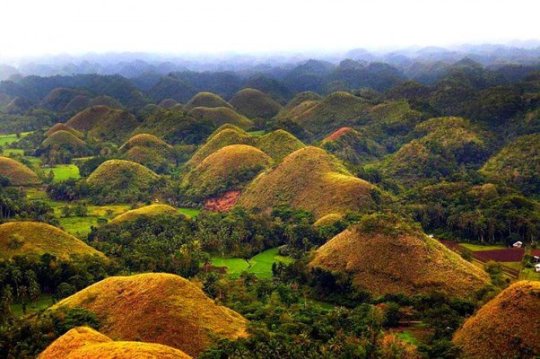
Giants Nest – In 1949 a geologist named Vadim Kolpakov discovered a large mound of limestone in the north of the Irkutsk region in southeastern Siberia. The cone is curiously shaped with a crater at the top and a small mound in the center. The mound is about 40 meters high and 100 meters across at the base. The smaller mound at the top is about 12 meters high. The crater was named Patomskiy, after a nearby river, but local residents call it “the Fiery Eagle’s Nest”. Since the discovery of the crater, there have been many theories as to what could have created it. For a long time it was believed to be a meteorite impact structure. Some linked it to the Tunguska meteorite, whose remains have never been discovered. But the crater does not resemble any other known meteorite site. Even now, the origin of the crater is not discovered.
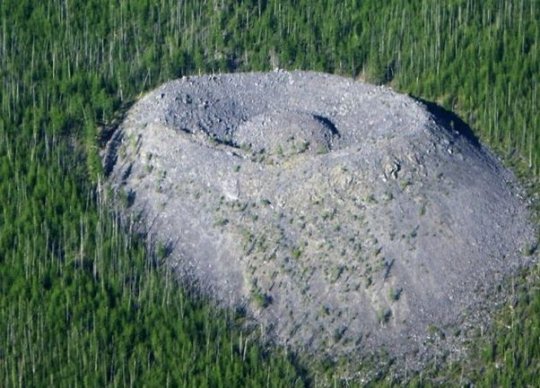
Richat Structure – In the midst of vast, vacant Sahara desert, just outside of Ouadane, Mauritania, lies a 30-mile wide geological oddity known the Richat Structure, sometimes called the “Eye of Africa.” From space, this natural curiosity forms a distinct and unmistakable bull’s-eye that once served as a geographical landmark for early astronauts as they passed over the Sahara. Once thought to be an impact crater due to its circularity, the unusual formation is now widely believed to have been caused by the erosion of a geological dome formed by pressure from a bulb of molten magma below.
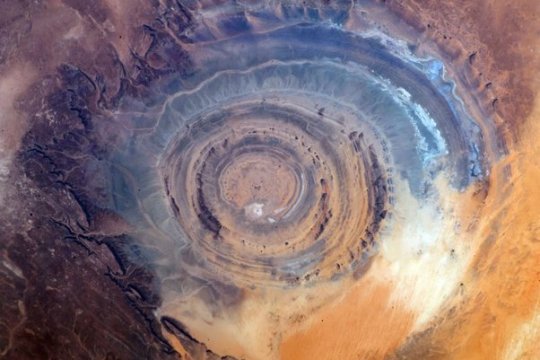
Plain of Jars – The Plain of Jars is a collection of large stone jars interspersed throughout the Xieng Khouang plain in the Lao Highlands. The stone structures are mostly made of sedimentary rock and, ranging from 3 to 10 feet in height, each can weigh up to 14 tons. To date, the origin of the jars is unknown, though archaeologists believe that they were originally used between 1,500 and 2,000 years ago. Many researchers have theorized that the jars may have once served as funerals urns or food storage. As local Laotian legend would have it, the jars were created by Khun Cheung, an ancient king of giants who lived in the highlands. It is said that Cheung, after fighting a long and victorious battle, created the jars in order to brew huge amounts of celebratory lao lao rice wine.
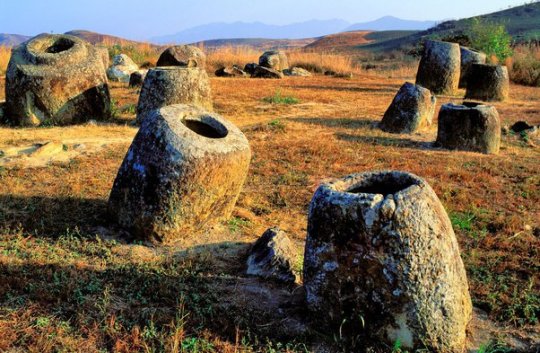
Giant’s Grave of Coddu Vecchiu – Giant’s or Tomba Dei giganti, are megalithic gallery graves that were used as public tombs during the Bronze Age. The massive gravestones were built by the Nuragic civilization, which existed in Sardinia from the 2nd millennium BCE. to the 2nd century CE. Despite the imaginative name, the sites were not the burial site of any giant; they were giant community burial chambers. Though we know the tombs had a funerary purpose, more questions remain. Little is known about the rituals or traditional beliefs that motivated their construction. Were they mass graves? Were they built to facilitate the journey into the afterlife? Since their existence has yet to be justified by scientific research, they have been credited to the supernatural, which has only increased their mystery. Legend also claims that yes, indeed, these were the tombs of powerful giants.
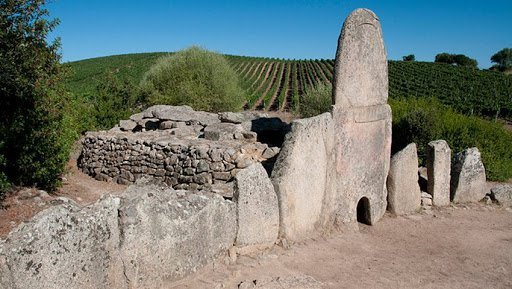
Zone of Silence – Pilot Francisco Sarabia was flying over a patch of desert land in Mexico when his instruments started to act increasingly odd. The man had to make an emergency landing in the middle of nowhere. Little did he know that this "nowhere" would be later dubbed "The Zone of Silence.” Weird radio silence isn't the only oddity of the creepy Zone. Like, what’s that weird trio that locals keep meeting in the Zone? They’re two men and a woman. Every time people see them, they’re wearing bizarre clothing that isn't suitable for a journey in the desert whatsoever. On top of all that, the Zone of Silence is known as a 50 km patch of deserted land where meteorites come crashing down on an eerily regular basis. On July 11, 1970, the US launched an ATHENA rocket from the Air Force base in Green River, Utah. The rocket was supposed to land somewhere in the area of White Sands in New Mexico. Instead, it went off course and, as if being pulled by some external force, crashed right in the heart of the Zone of Silence.
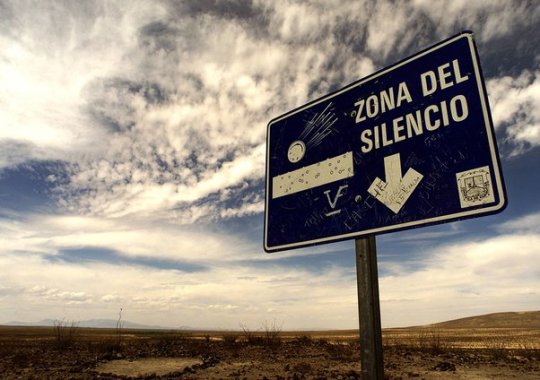
Michigan Triangle – Stretching from Ludington to Benton Harbor, Michigan and to Manitowoc, Wisconsin, the Lake Michigan Triangle has inspired numerous accounts of activity that are difficult to explain by rational thought. The mystery began in 1891, when a schooner named the Thomas Hume set off across the Lake to pick up lumber. Almost overnight in a torrent of wind, the Thomas Hume disappeared along with its crew of seven sailors. The wooden boat was never found. After the turn of the century, strange events happened at steady intervals. Of the more mysterious is the case of the Rosa Belle. In 1921 eleven people inside the ship, who were all members of the Benton Harbor House of David, disappeared and their ship was found overturned and floating in Lake Michigan. While it appeared that the ship had been damaged in a collision, no other ship had reported an accident and no other remains had been found.
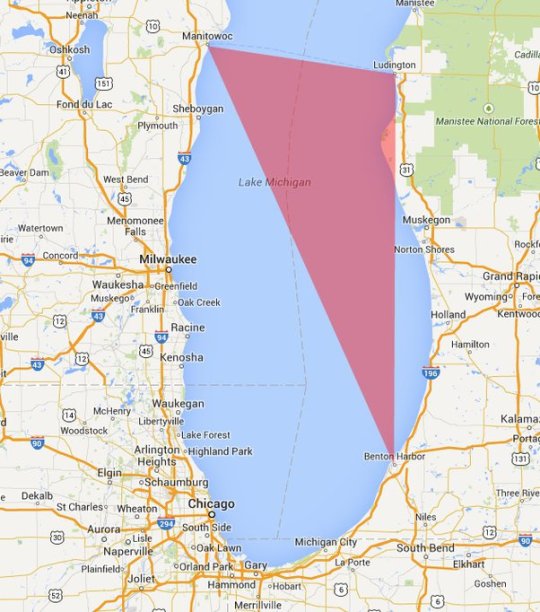
Alaska Triangle – The Alaska Triangle is a place in the untouched wilderness where mystery lingers and people go missing at a very high rate. The area began attracting public attention in October 1972, when a small, private plane carrying U.S. House Majority Leader Hale Boggs, Alaska Congressman Nick Begich seemingly vanished into thin air. For more than a month, 50 civilian planes and 40 military aircraft plus dozens of boats, covered a search area of 32,000 square miles, but no trace of the plane, the men, wreckage or debris were ever found. Afterward, more planes went down, hikers went missing, and Alaskan residents and tourists seemed to vanish into thin air. In fact, since 1988, more than 16,000 people have disappeared in the Alaska Triangle, with a missing person rate at more than twice the national average. These disappearances are blamed on everything from severe weather to aliens, to swirling energy vortexes, to an evil shape-shifting demon of Tlingit Indian lore called Kushtaka, with no scientific explanation to the disappearances till today.

The Initiation Well – The Initiation well is 88 feet deep well located on the land of Quinta da Regaleira. Actually, it was used for ceremonial purposes. There is another small well near this well. Both these wells are connected by tunnels. The larger well contains a 27-meter spiral staircase with several small landings and the smaller well contains straight stairs that connect a series of ring-shaped floors to one another. The smaller well is also called the 'Unfinished Well'. The depth of this larger well is equal to the four-storey building, which becomes narrower on going closer to the ground. It is believed that there is some kind of light comes out from the well inside the ground and comes outwards. Surprisingly, there is no system of light inside this well, then where from this light comes, it is the secret. Anyone who comes to visit here, always raises the question of where the light comes from inside the well? Till today this secret is unsolved.
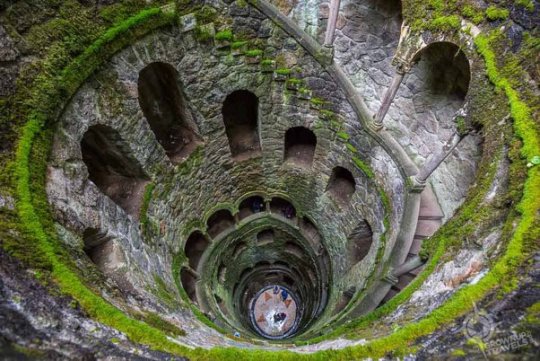
(Image Source : Google)
Thanks for Reading.
693 notes
·
View notes
Text
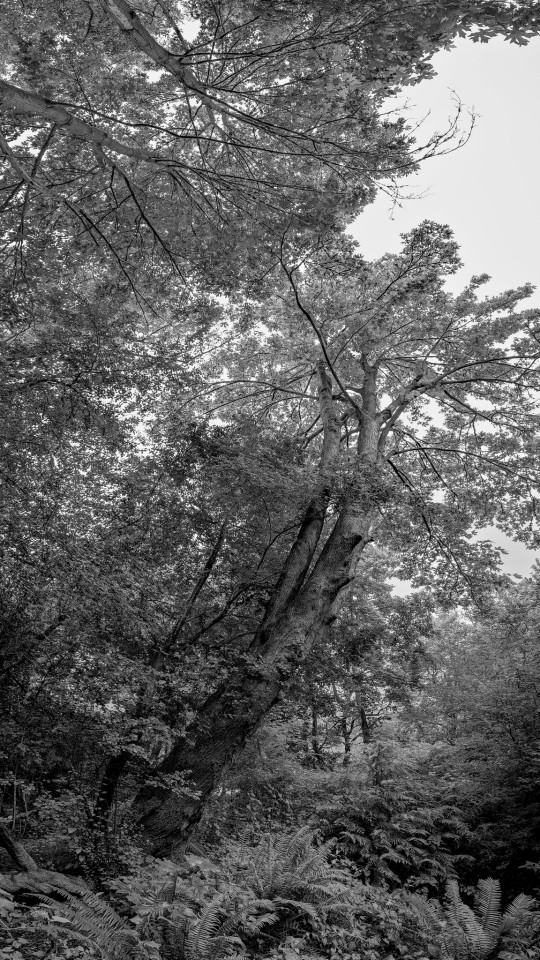
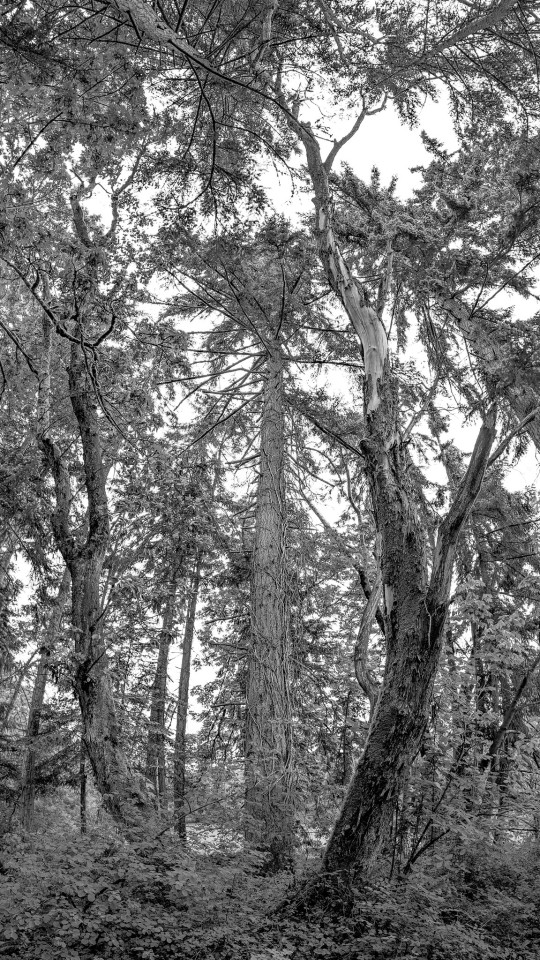
Unsettling Sound The Puget Sound is an unsettled sea that lies above the tectonically active western edge of the North American Plate. This large body of frigid water is separated from the Pacific Ocean by the Olympic Mountains to its west and the Cascades to its east. Glaciers crowded into the Sound during the last ice age, advancing from the north. When they retreated some 13,000 years ago they left behind deep deposits of interglacial sediment. These sand and clay remnants, in turn, were carved by frequent rain, sea and wind erosion to form high, unstable coastal bluffs, which were soon blanketed by dense evergreen overgrowths of cedar, hemlock and fir, and undergrowths of alder, blackberry and fern. As erosion progresses this cover slides from high bluffs in slow cascades that often take decades to complete from hilltop to shore. The process is sped up when the northwest rains are heaviest. Landslides can carry trees and their understory to the beach in an instant. Once arrived on the shore, the upended forest enters the marine ecosystem, where it functions as nutrient, shelter and barrier. In the last centuries, human structures have been added to this tumult. Houses perched on bluffs afford spectacular views and command high prices, but they face the disturbing prospect of being splayed across the beach following a prolonged downpour. Slides in the Northwest earn frequent headlines, and were even the subject of a popular book and film set on the slopes of Queen Anne Hill. Much hilltop construction in the area occurs with little immediate awareness of the role erosion plays in maintaining both the geological and biological integrity of the Sound. A common response to the inevitable is to line the bank with black basaltic stones quarried from ancient lava beds. The proliferation of these bulkheads throughout the Puget Sound has resulted in a phenomenon called “shoreline hardening.” According to some government statistics, approximately 30 percent of the Sound’s shoreline is now armored with stone and concrete reinforcements. This happened along the beach where my family has lived for nearly a century. in the 1970s and 80s, property owners piled stone bulkheads to shore up against sliding —attempting to fix in time something that’s always in flux. The results of our obstinance has been devastating. Within years this beach began to lose much of its value. As a child, I can remember clawing a hundred Native Littlenecks from the sand and clay beneath beach rocks. We let these clams sit for a couple of hours in a bucket of seawater. My grandparents taught us to sprinkle in cornmeal so they could spit out stomach sand as they fed. Once full, they were transferred into a steaming pot where they open latticed shells to offer up their tenderness. Today I’m lucky if I find a single Littleneck after 30 minutes of raking. When I visit the Sound, I think of Sue and Payne, who were privileged to live on this shore and loved what it could yield to any of their grandchildren willing to put some time into it. They left us more than 20 years ago, and a new generation of family has built modern homes on the foundations of those Sue and Payne left behind. In time, ownership may be handed to successive generations, or we might drift away, passing the beachfront to someone with no memory of what it meant to a family that gathered there. And while the Sound may retain much of its scenic beauty, this too is fleeting. The tides will rise and fall revealing stretches of rocks and sand, again and again, and still something will always remain unsettled until it’s gone.
#timothy karr#documentary photography#landscape photography#witness#and words#cellphone photography#cellphone composite
131 notes
·
View notes
Text


Chryse Chaos
In planetary nomenclature, the term “chaos” means “distinctive area of broken terrain.” The general shape of chaos terrain is steep-sided mesas (or other large blocky material) in close proximity to one another. The mesas are created by erosion of the interconnected channels into valleys. With time these valleys expand creating a jumble of hills
ID: ESP_054424_1925 date: 7 March 2018 altitude: 279 km
NASA/JPL-Caltech/University of Arizona
40 notes
·
View notes
Photo





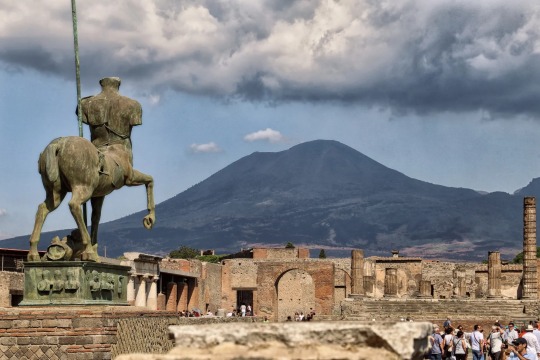

Sheep Help Archaeologists Preserve Ancient Ruins at Pompeii
A flock of grazing sheep is helping archaeologists to preserve the ancient ruins of Pompeii, the Roman city that was buried under meters of pumice and ash in the calamitous eruption of Mount Vesuvius in AD 79.
Archaeologists have uncovered only around two thirds of the 66-hectare (163 acres) site at Pompeii since excavations began 250 years ago.
Preserving the unexplored sections of the ancient city against erosion by nature and time is a priority for those who manage the site.
“If grass and other plants grow in or on the ancient walls and houses this is a problem. So we try to have a sustainable approach to the whole environment in order also to avoid using substances then to avoid growing plants, having plants growing on the walls and ruins,” said Gabriel Zuchtriegel, the director of the Pompeii Archaeological Park.
The flock of 150 sheep has been deployed to Regio V, a northern section of the city, where grassy hills are dotted with the ruined remains of ancient houses and shops.
Regio V is still off limits to the millions of visitors who come to Pompeii each year, but as part of its conservation efforts the archaeology park has in recent years launched new excavations at the site.
Among the striking discoveries since 2018 were vibrant frescoes, a snack shop and the skeletal remains of people killed in the eruption.
Zuchtriegel said the sheep initiative does not contribute to efforts of reducing carbon emissions, but helps to save money and preserve the landscape.
“It’s also something which really gives an idea of how Pompeii was in the time when it was rediscovered. It was woods, vineyards, sheep and it was this kind of rural environment and in the midst of that you had Pompeii.”
#Pompeii#Sheep Help Archaeologists Preserve Ancient Ruins at Pompeii#Mount Vesuvius#archeology#archeolgst#ancient artifacts#history#history news#ancient history#ancient culture#ancient civilizations#roman empire#roman history
964 notes
·
View notes
Note
If it's the ask I think it is about him whimpering when he finishes you can totally do topping him from the bottom I won't mind either way (I'm the one who sent that and I would love bottom Soap too)
Hehehe yeah, it was. Topping from the bottom... bottomming from the top... siding from diagonal... yeah well I think this is not "topping from the bottom" (cuz that's like. cowgirl and such, right? you're being penetrated but you have control. i think. i don't know...) But it is bottom Soap because I let my intrusive thoughts win, and all as a result of me skimming through your request too fast, lmao.
CW: short smut, gn!top!reader, unprotected sex and breeding, mild dom/sub dynamic (subby Soap). A hint of sweat kink? NSFW, minors and ageless blogs DNI or I'll block you. This can be read as amab!reader or reader using one of those squirting straps, cuz breeding Soap should be a given right no matter what you're packing. Still referred as "cock" and "cum", though.
You feel like a cosmonaut looking at another planet's surface, unfamiliar, captivating beauty of smooth planes, raised crests and hills, naturally soft dips and trenches, and even traces of sharp impact smoothed out by years of tectonic movements and erosion. There's a particular flavour of ecstasy, threading through your body like spreading mycelium, little fibers burrowing into the depth of your tissues and internal organs, just from watching this terra incognita breathe and move underneath you. It's alive, it's reacting to you, yielding under your touch - seemingly unmoving mass shuddering and shifting as you put your palm on it and press down.
Soap arches his back, giving in, and gasps at the feeling of your cock pressing against his fluttering walls. He's full of you, stretched rim glistening with lube and pointlessly fluttering around the shaft - doesn't matter whether his body is trying to push you out or suck you in, you're moving in rhythmic, calculated thrusts, hips slapping against his ass and sending satisfying ripples through the soft flesh just as you please.
"Feels good, Johnny?" You chuckle, hearing his low groan - the only response he can offer, squeezing already nasty pillow in his arms and jerking his hips up to meet you half way. "Yeah, feels good for me too. So fucking good, baby. F-fuck, you're a mess, hah."
You're mesmerized by the way his shoulder blades move, rising under his thick, sweaty skin in an attempt to connect, and then part again, letting his muscles swallow them into the living mass of his form as he squirms and rocks back and forth, impaling himself on your cock with obcene wet sounds. There's a sticky, slimy mess soaking the sheets under his drooling cock, grinding against the fabric to add to the sweet torture.
"Wanna know how good? Yeah? Want me to cum inside? Gonna fill you up, sunshine, s-so good, oof..." There's sweat seeping into your eyes - fucking into a huge soldier boy isn't a breezy walk, you have to put a lot of effort into slamming into his offered ass again and again. It's worth it, though, heat radiating off Johnny's body and clinging to you as you find your footing, gripping onto his hip and pushing him face down by his nape with another hand. It takes a little longer, a little quicker pace and a lot more whimpering and panting moaning from Johnny, before you finally erupt deep inside him, making a point of sliding in to the limit and staying there as you rapidly fill him with your cum.
Soap's muscles all tense up as he grips onto the sheets and spills right after you, sensitive cockhead catching onto the crampled mess and twitching as his sperm adds to the thick wetness smeared on your bed. You're a little light-headed, chest heaving as you come to a stop in your thrusts, so you need a moment before you can register there are words in Johnny's fucked-out blabbering and whimpering.
"Shite, ah, thank ye, mh, thank ye, thankyethankyeth... bonnie... please, dinnae pull oot yet, please-" He almost hiccups when you pull yourself together and nudge your cock a little further into the wet, sticky hole before it slips out. With a chuckle, you collapse on top of Johnny's exhusted form, nuzzling between his shoulder blades and licking up salty droplets pooling up in the soft dip between. Dragging your tongue up, you bury your nose into the prickly buzzed hair at the base of Johnny's skull and bite him affectionately, ruffling his drenched mohawk before you hug him around his shoulders.
"So grateful for my cum in your ass, eh? Good boy. I love you." There's a loud, blissfull exhale on his part - you feel his body relax under your weight.
"Ah love ye too, bonnie. So much."
29 notes
·
View notes
Text
Teen Solos NYCDA
Thanks to @thedancefan22 for recording and sharing the link!!
7th place and higher scored 297 or higher!
1st place above 298!
1st Maceo Paras-Mangrobang (Westlake) - In Plain Sight
2nd: Eva Jimmerson (Renner) - Mischievous Waltz
3rd: Trey Diaz (Tucson Dance Academy) - Dracula
3rd: Francesca O'Brien (Prestige) - One Moment in Time
4th: Jazlyn Quintero (Dance Town) - Evolving
5th: Gracelyn Weber (Dallas Conservatory) - Erosion
6th: Makeila Bartlett (P21) - Red Shadow
7th: Arouche (Premier Dance Center) - Another One Bites The Dust
8th: Jack Schofield (Elite Academy of Dance) - Becoming
9th: Zoe McDonald (Dallas Conservatory) - Girl from
9th: Milan Deng (Dance Inc) - Bitter Earth
9th: Alivya Alfonso (Elite Dance Pro) - Fleur
10th: Zachary Roy (Dance Town) - After A Dream
11th: Sloane Adams (N10) - Worn Thin
12th: Stella Stephenson (Dallas Conservatory) - Affliction
12th: Jazmine Werner (Dance Enthusiasm) - Ville Morose
13th: Victoria Russo (A3 District) - Depth
14: Ava (Studio West) - Movement Chapter 14
15: Sophia Chin (Texas Academy of Dance Arts) - Ineffable
16th: Brooklyn Ladia (P21) - Sing It Back
17th: Claire Kingston (N10) - Is That All There Is
18th: Allegra Post (Sweatshop) - A Dream Within A Dream
19th: Lauren Batuna (Dallas Conservatory) - Impermanence
20th: Addison Haggerty (MÜV) - Core
21st: Isabelle 7(Utah Arts Collective) - If I Be Wrong
22nd: Mason Gallenero (Dance Inc) - Man Or Machine
23rd: Harper Sherrard (Dallas Conservatory) - Natalie Don't
24th: Ally Choi (P21) - Echoes
24th: Kasey Blackmon (Collective PHX) - Lost Religion
25th: Savannah Wilkes (Dance Colony) - Immediately
26th: Cassidy (Tucson Dance Academy) - Echoes Emerging
27th: Lilly Hill (Collective Phoenix) - Final Waltz
28th: Johnny Gray (Nevada Ballet) - What Happened
29th: Journey Dye (Dyn'2Dance) - Plunder
29th: Matthias (A3 District) - It's All Right
30th: Sophia (Dance Unlimited) - Hypnosis
44 notes
·
View notes
Video
A 5 Star Morning in the Alabama Hills National Scenic Area by Mark Stevens Via Flickr: While at a roadside pullout along Olivas Ranch Road with a view looking to the west across a desert landscape. This is in the Alabama Hills National Scenic Area. The backdrop of mountains is part of the Mount Whitney Group range of the Sierra Nevada mountains. Lone Pine Peak is probably the most recognizable one in the image middle, just left of center. Mount Whitney is in the middle image, just right of center. By angling my Nikon SLR camera slightly downward, I felt I was able to create a more sweeping view across the desert landscape leading up to the mountains.
#Alabama Hills#Alabama Hills National Scenic Area#Azimuth 260#Blue Skies#California and Oregon Road Trip#Candlelight Peak#Canvas#Day 2#Desert#Desert Landscape#Desert Mountain Landscape#Desert Plant Life#DxO PhotoLab 5 Edited#Erosion#Hillsides#Inyo National Forest#Landscape#Landscape - Scenery#Lone Pine Peak#Looking West#Mount Carillon#Mount Whitney#Mount Whitney Group#Mountain Peak#Mountains#Mountains in Distance#Mountains off in Distance#Mountainside#Nature#Nikon D850
3 notes
·
View notes
Text
“We are seeing a growing interest in cork as a sustainable material,” says Rui Novais, a materials expert at the University of Aveiro in Portugal. “Compared with materials like polyurethane foam [used for thermal insulation], products made with cork require less energy and produce less CO2 emissions.” The cork oak’s thick bark adapted to defend the tree from fire, making it a powerful insulating material that’s been used to shield fuel tanks on NASA spacecraft and electric car batteries. It’s also resistant to water and oil, and can withstand compression while retaining springiness. “It’s an extraordinary, renewable and biodegradable material,” says Novais. “It’s also very durable. It has been demonstrated that cork products remain virtually unchanged for more than 50 years.” Part of the carbon absorbed by cork oak trees is transferred to cork products, which can be used for long periods, repurposed and recycled. Several studies found that cork is carbon negative, meaning it can store more carbon than what is required to produce it. When cork planks are trimmed and punched to form natural cork stoppers, the leftovers are ground into granules and pressed together to form cork sheets or blocks. “Even cork dust is used to produce energy,” says João Rui Ferreira, secretary general of the Portuguese Cork Association. “It feeds the industry’s boilers and powers some of the production.”
[...]
Most of the cork produced in Portugal grows in the gently undulating hills and plains in the south of the country, in an ancient agroforestry system known as montado. This savannah-like ecosystem combines cork, holm oaks and olive trees with pastures, grazing livestock, crops and fallows. “The soil in southern Portugal is very poor, there is very little rain and temperatures are very high in the summer,” says Teresa Pinto-Correia, a professor at the University of Évora in Portugal specializing in rural landscapes and agricultural systems. “But this kind of system is productive even when resources are scarce and conditions are difficult.” For centuries, locals have preserved the montado because cork provided landowners with a source of income. This mosaic of habitats supports hundreds of species, including the Iberian lynx, the world’s most endangered wildcat, and the threatened Imperial eagle. One of the world’s oldest known cork oak trees, planted in 1783 in Águas de Moura, is known as “the whistler” because so many birds visit its large sprawling branches. Iberian pigs feed on acorns and goats graze the interwoven pastures. Interspersing cork oak trees with animals and crops can boost production and biodiversity, but also build soil, control erosion, retain water, combat desertification and sequester carbon, says Pinto-Correia.
138 notes
·
View notes
